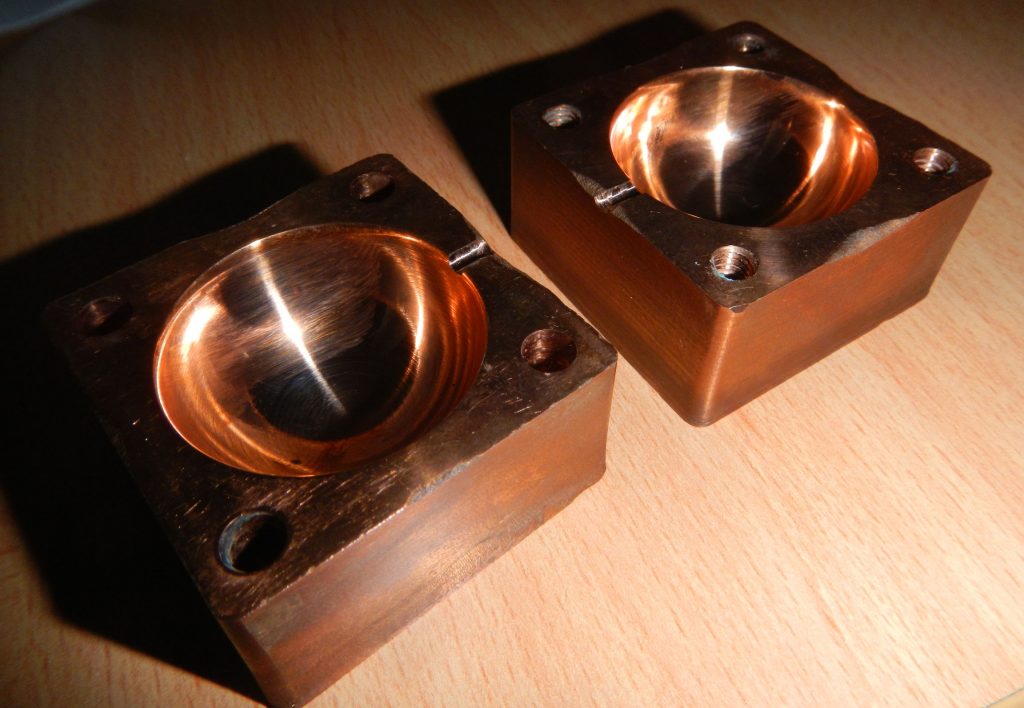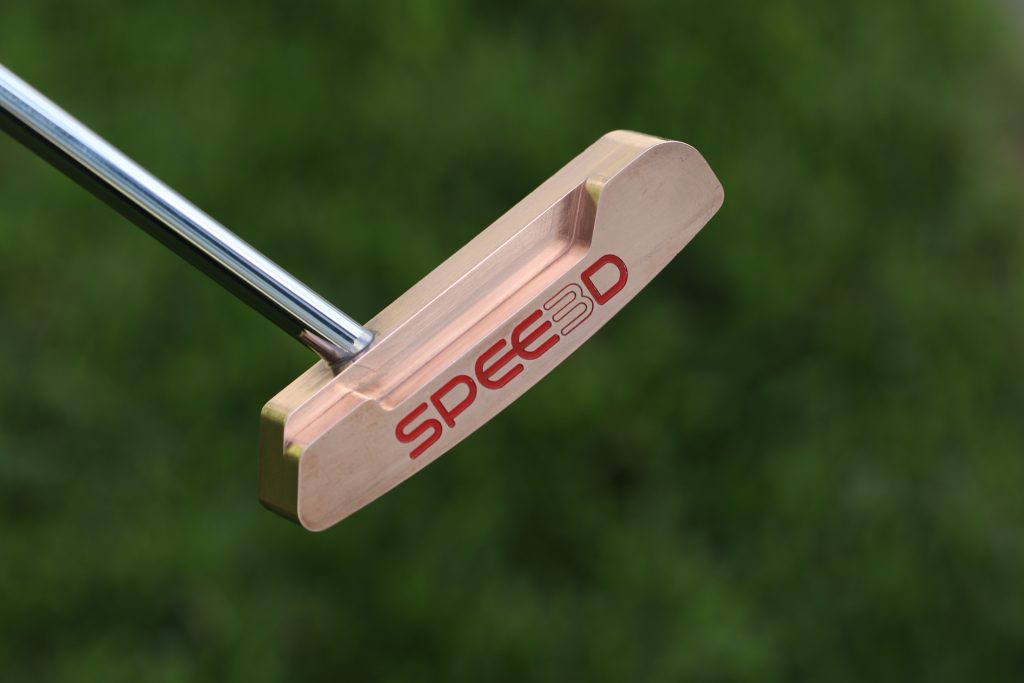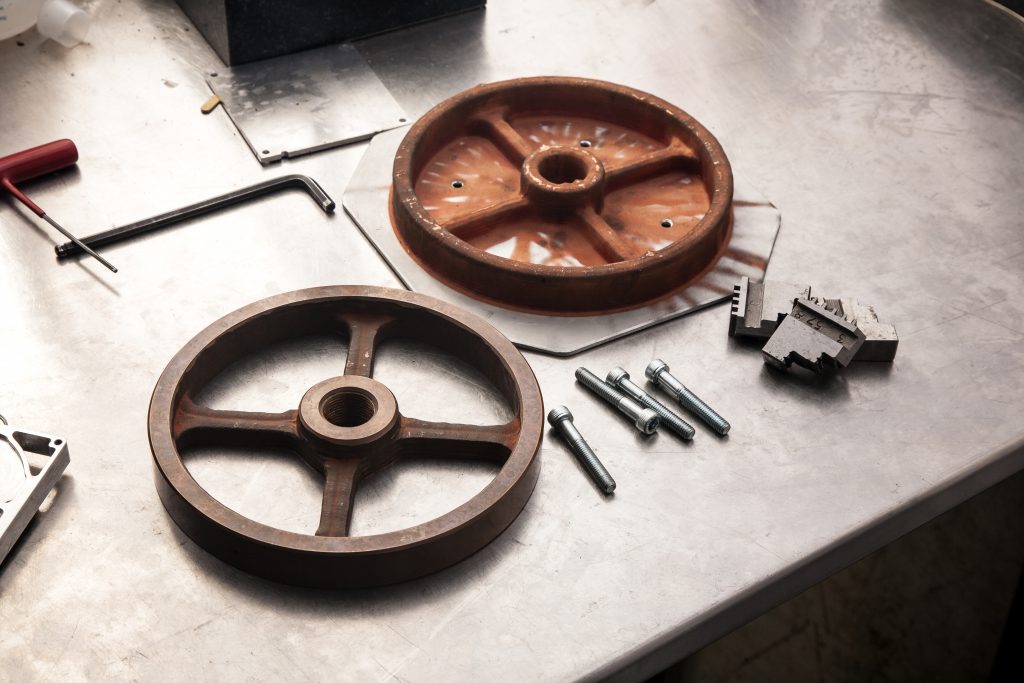This is a guest post in our series looking at the future of 3D Printing. To celebrate 5 years of reporting on the 3D printing industry, we’ve invited industry leaders and 3D printing experts to give us their perspective on the next 5 years of 3D printing.
Byron Kennedy is co-founder and CEO of SPEE3D, a high-speed, metal 3D printing company in Melbourne, Australia. He leads the business strategy and vision, in addition to bringing vast experience from the manufacturing industry and understanding the challenges manufacturers face.

The Future of 3D Copper Printing: A New Age for an Old Metal
Copper was the first metal in widespread use by prehistoric humans. Like the durability of the metal itself, copper has withstood the test of time, remaining one of the most useful and most used metals today in everything from wiring to instruments and boat propellers.
In manufacturing, the reddish brown metal is prized for its extremely high electrical and thermal conductivity. However, while copper remains widely used in industry, it has gained little traction in the 3D printing space, primarily due to the technical challenges involved in printing with it. This is all about to change with the development of several new 3D printing processes suited specifically to 3D copper printing.
Copper has an untarnished reputation
From its initial use in coins and ornaments — to today, in electronic product manufacturing — copper remains a popular material for its durability, non-corrosive nature and as one of the best conductors of electricity. Pure copper forms the core of most electrical cables in buildings, as well as the windings in electric motors. Additionally, high capacity buses throughout electrical distribution are all made from copper sheet, block or cast.
Copper is also excellent for thermal conductivity, making it ideal for radiator and heater cores, piping for air conditioning and heating systems, and heatsinks. In fact, any application with high exposure to the environment can benefit from the corrosion resistance of copper. For example, a copper roof is said to last for a thousand years. It’s for this reason, that copper is a common material used for piping — it is long-lasting and quite durable. While those are the more well-known uses, copper’s anti-fouling and antimicrobial properties kill bugs, including superbugs such as MRSA, making it an ideal material for the medical market.

New technologies open the 3D copper printing market
While we’ve established that copper has a myriad of uses in manufacturing, it has not gained widespread adoption in the 3D printing market as only a minority of 3D printing processes today can make copper parts. In general, 3D printing relies on building a metal component by laser welding, a process that melts the metal powder under computer controlled guidance. However, this process is difficult for copper. The issue is that when struck by common infrared fiber lasers, the high reflectivity of copper prevents energy absorption and melting. In addition, the thermal conductivity of copper conducts the heat away from the last melt pool, reducing the process effectiveness.
More expensive processes such as electron beam melting and green laser melting, recently developed by Fraunhofer, do work with copper to a degree, but have not been widely adopted. However, there are several newly developed 3D printing processes that eliminate thermal welding making it better suited to working with copper, including supersonic 3D deposition (SP3D), bound metal deposition (BMD) and Nanoparticle jetting (NPJ).
We are on the precipice of a new era in 3D metal printing with copper and laser-less 3D printing technologies. These new processes eliminate the reflective and melting issues associated with copper and allow for the manufacturing of common parts, rather than requiring significant part redesign before they can be printed. Examples of these include busbars used in electric vehicles and utilities, high performance heatsinks and radiators, high-speed tooling and even more conventional home items as tapware.

Interestingly, these new forms of 3D printing all rely on using a powdered copper metal. Unlike other common 3D printed metals such as aluminium and titanium, copper powder does not require special management processes due to its low flammability.
Once thought of as a high cost material that is difficult to use in the manufacturing of complex shapes, copper is now viewed as an exciting and new emerging market in 3D printing. It is economical and can be generally sourced for prices close to the base metal — a win-win in both use and price.

Starting this year, we will begin to see 3D copper printed parts including high performance heatsinks for electric and autonomous vehicles, conductors for the drive systems of those vehicles, waveguides for radar and communication and advanced building elements such as antimicrobial door handles. Cold bonding processes even allow for the modification of existing parts using 3D printing such as directly printing copper pin heatsinks onto the hot surfaces of semiconductors.
3D copper printing represents a huge untapped market. Now with the new technologies that have the capability to 3D print copper parts economically, the opportunities abound. Manufacturers who have a tricky new application or are looking for an innovative solution should consider copper.

This is a guest post in our series looking at the future of 3D Printing, if you’d like to participate in this series then contact us for more information. For more insights into the 3D printing industry, sign up to our free newsletter and follow our active social media channels.
More information about Spee3D is available here.
Nominations for the 2018 3D Printing Industry Awards are open now, let us know the leading additive manufacturing enterprises here.
Featured image shows Byron Kennedy, CEO and co-founder, SPEE3D.



